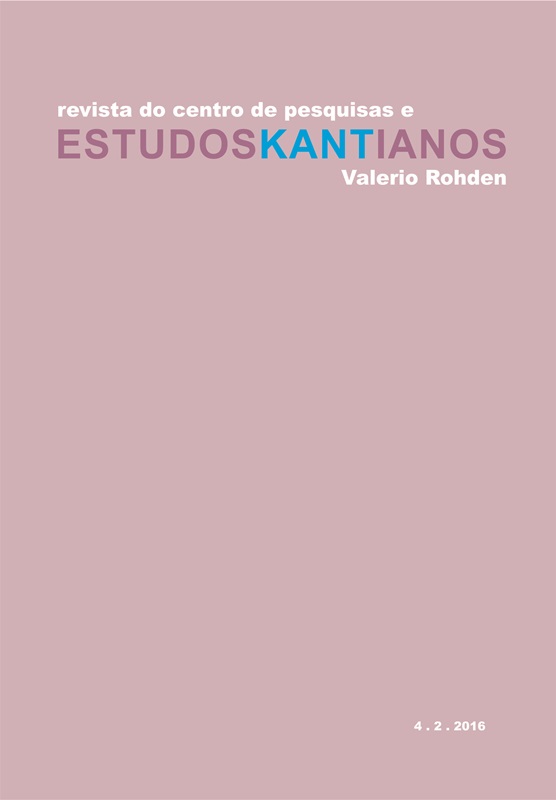BETWEEN ‘PERCEPTION’ AND UNDERSTANDING, FROM LEIBNIZ TO KANT
DOI:
https://doi.org/10.36311/2318-0501.2016.v4n2.06.p71Abstract
Much of the discussion of Kant’s account of theoretical ‘cognition [Erkenntnis]’ and ‘knowledge [Wissen]’ over the past several centuries has (understandably) focused on the nature and significance of his distinction within ‘representations [Vorstellungen]’ between ‘intuitions [Anschauungen]’ and ‘concepts [Begriffe]’, in order to specify their relevant contributions to ‘experience [Erfahrung]’ and to cognition more broadly. Recently, however, it is becoming more widely recognized that Kant’s account of theoretical cognition in general involves a much wider suite of representations than merely intuitions and concepts, and that many of these are involved in essential ways in the constitution of experience in particular. More specifically, closer attention is being paid to the distinctive role played in the constitution of experience by ‘the power of imagination [Einbildungskraft]’, ‘apprehension’, ‘perception [Wahrnehmung]’, ‘consciousness [Bewußtsein]’, ‘images [Bilder]’, ‘schemata’, and even ‘appearances [Erscheinungen]’ themselves as the immediate though undetermined ‘objects’ of intuition (cf. KrV, B 33) – as all providing their own distinct, if complementary, contributions to experience and cognition, related to but separate from those provided by intuitions and concepts themselves.1 All of these representations are singled out at key points (some even in the very section headings) in Kant’s discussion of cognition in the first Critique for the separate contribution that they make in the process of allowing cognition itself to ‘arise [entspringen]’ from the ‘unification [Vereinigung]’ of intuitions with concepts (cf. B75-6).
![Estudos Kantianos [EK]](https://revistas.marilia.unesp.br/public/journals/16/pageHeaderLogoImage_pt_BR.png)



